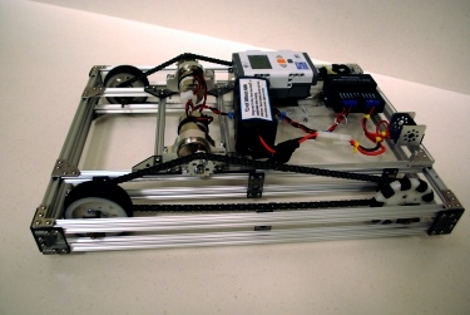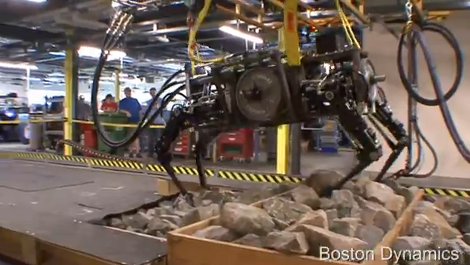
This is a four-wheeled robot chassis built by high school students over the summer. They were participating in workshops put on by xbot robotics in Seattle, Washington. The goal is to get them participating in events like FIRST Robotics and LEGO league, and eventually into science related careers.
At first glance we thought: oh, that’s a nice chassis build… on to the next tip. But then the difference in front and rear wheel types caught our eye. The problem with four-wheeled designs is that you need differential steering to overcome the skidding issue when turning. This usually means two independently powered rear wheels and one unpowered front wheel that can swivel. One way to overcome this is to use three omniwheels, each with their own motor. And more recently we have seen four-wheelers that use mechanum wheels to get around the issue… but that takes four motors.
The design seen above uses just two motors, each with a chain to drive both wheels on one side. The rear wheels have rubber grippers which give them great traction. The front wheels are omni-wheels which allow them to move side to side easily during turns while aiding in forward progress when not turning. This gives the robot enough grip to push object around, like you can see in the video after the break.
Continue reading “Student Built Robot Chassis Has Something You Can Learn From”
















